Being a native of the Himalayas, camping has always been one of my favorite hobbies. I have made great memories spending nights in tents with friends, especially at high altitudes. Traditional tents are designed with relaxation, spaciousness, and protection from elements in mind. But as backpacking shifts toward lightweight and convenience, one-person hammock tents are becoming increasingly popular.
Curious about this trend, I decided to try out the Ridgerunner hammock tent when we received a unit for a hands-on review from Warbonnet Outdoors. Designed especially for side sleepers, its suspension bridge design offers good back support and comfort. How true are the claims? Keep reading to know about my experience.
What we like
- Strong build quality
- Suspension design
- Built-in bug net
- A slot for a sleeping pad
What we don’t like
- No storage bag for spreader bars
- Fast winds can be a challenge in stability
The First Impression
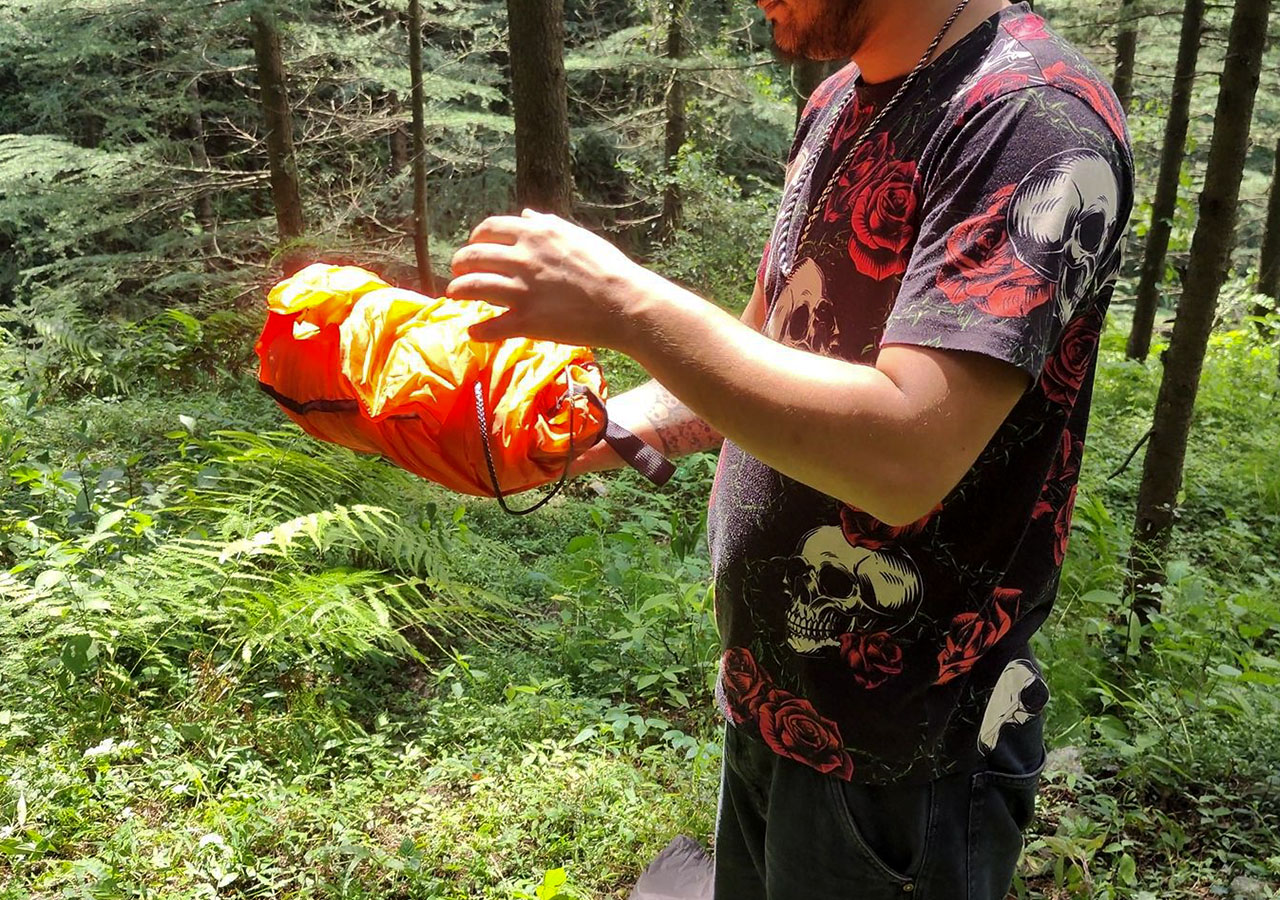
When I first opened the package, I was impressed by how neatly everything was packed. It was also surprising how such a big tent could wrap up inside such a small carry pouch, and to be true, I had my reservations. The fabric, stitching, and zippers looked durable, but I was worried about the webbing’s strength as it felt a bit flimsy.
Choosing and Preparing the Campsite

I have pitched traditional tents many times, but since this was a new concept for me, I sought some help figuring out the ways. The first challenge was finding a suitable location with two sturdy trees to hang the hammock tent from both ends. Locating the right site can be tricky, but once you do, setting up the Ridgerunner feels super easy. You simply tie it to the trees and adjust the height from the ground accordingly. Believe me, I managed to set it up in under five minutes all by myself.
Poles, Suspension, and Support System
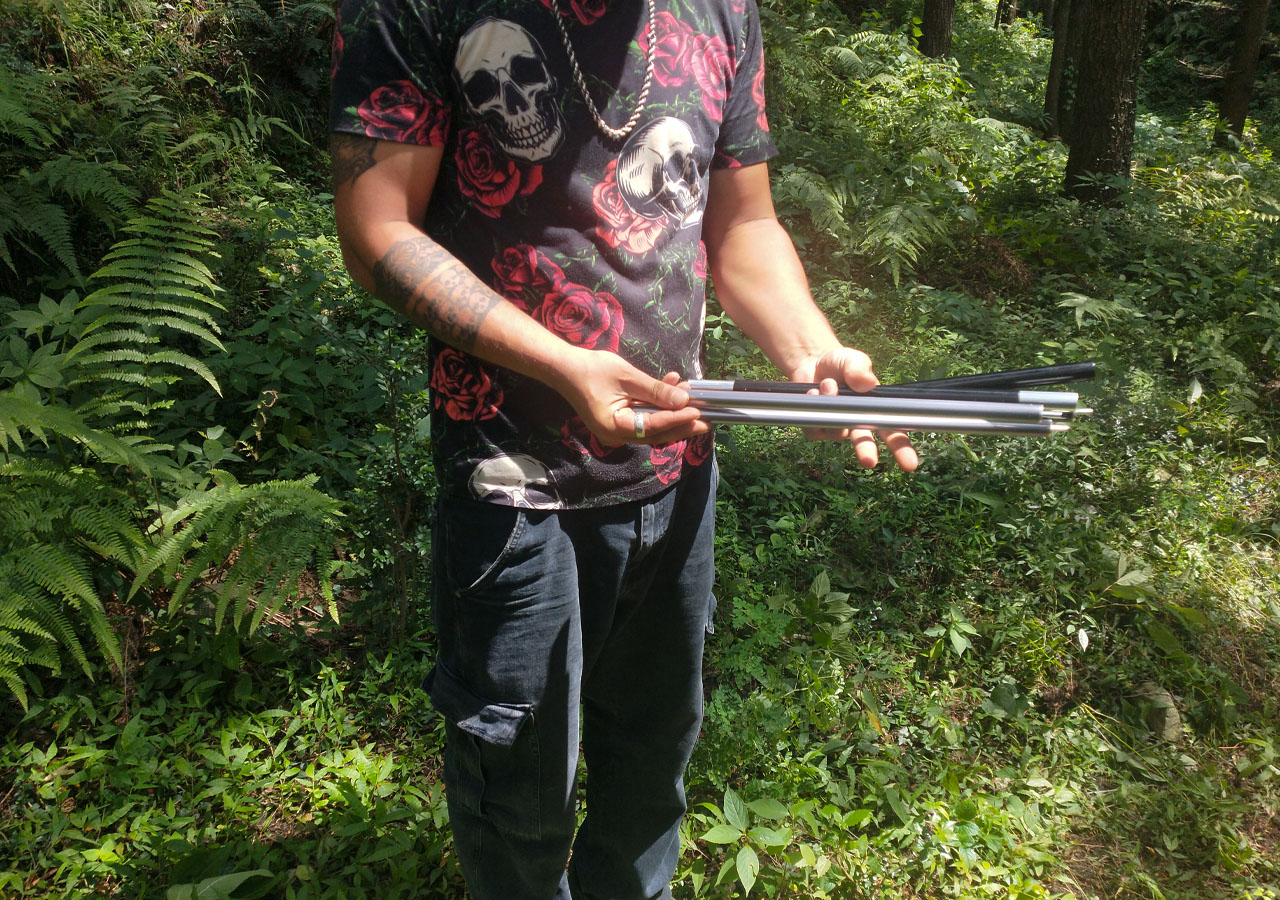
We received the Ridgerunner hammock tent with two 12-foot straps and buckles that work with carabiners. It comes packed in a small pouch that can fit in the side pocket of your backpack. What makes this hammock unique is its flat-lay design, inspired by suspension bridge mechanics. This design allows you to lie flat instead of in a curved position. Additionally, it features a built-in head and neck contour for enhanced support.
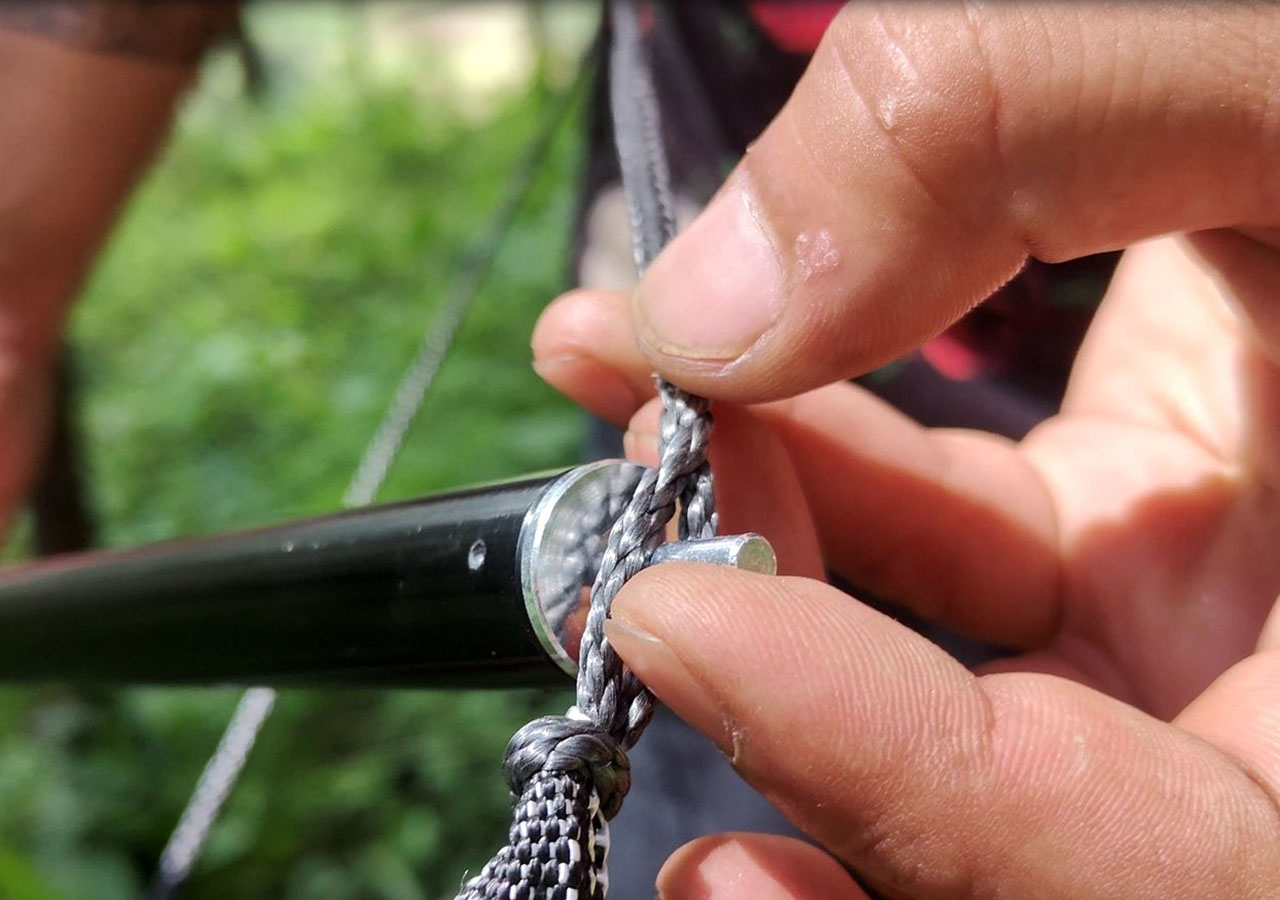
The tent includes separate spreader bars for head and foot ends, which help the hammock maintain its shape and ensure your back stays flat while sleeping. This means you do not have to sleep bent like a banana – you can comfortably lie on your back or even on your side without rolling out.
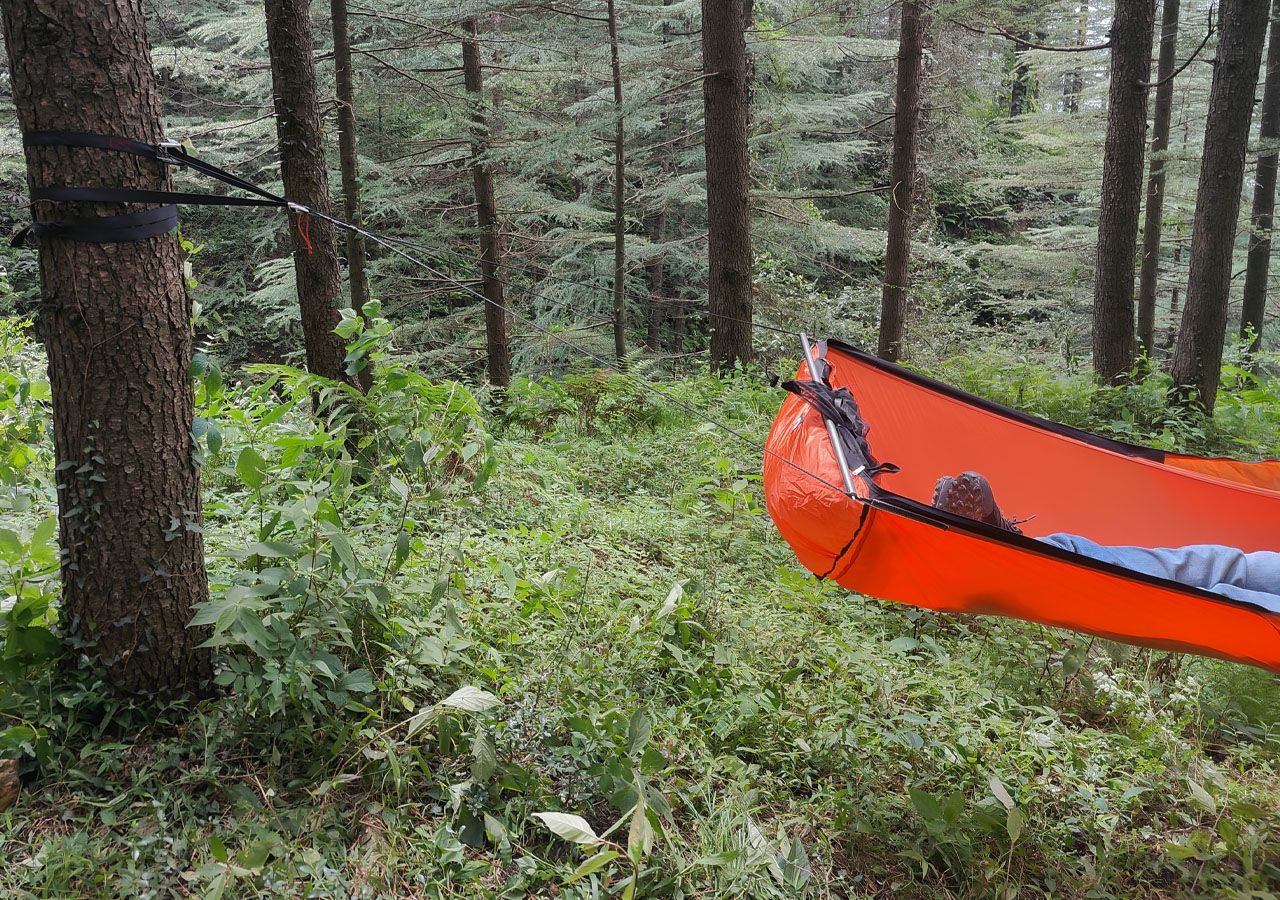
The tent spreader bars do not have their own storage bag, so you will need to find a spot for them in your backpack. They can be easy to misplace if you’re not careful. The pieces are color-coded for convenience: three black pieces for the head end and two shiny metallic ones for the foot end.
The Set-Up

My friends and I walked to a nearby deodar forest (Himalayan cedar forest) to try out the hammock tent, curious to see how it performed in real conditions. Setting up the Ridgerunner was easy: I simply took it out of the storage bag, laid it flat on the ground, and arranged both sides of the polyester webbing to prevent tangling while attaching it to the trees. The webbings are long enough and come with buckles and carabiners for easy attachment, even if the trees are a bit far apart. These features also make it simple to adjust the tent’s height off the ground. The manufacturer suggests keeping the foot end slightly higher than the head for comfort, but I found that you must adjust it according to your preference.
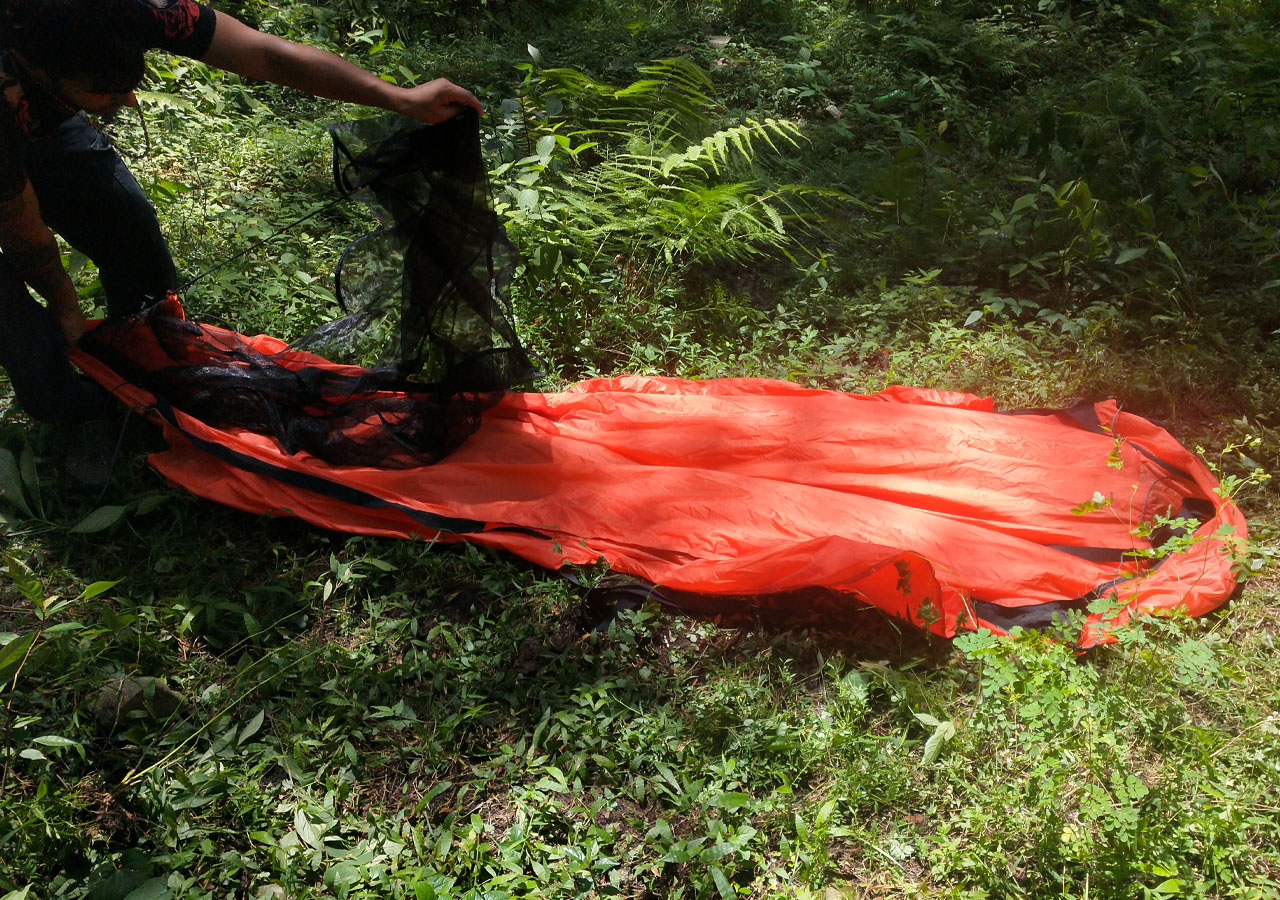
This double-layer hammock tent features an integrated bug net, making it ideal for camping in areas with flies or mosquitoes, or even for extra shade under the sun. It can be opened from either side and easily folded up to store in a saddlebag near the foot when not in use. The bug net features hooks and elastic cords that create a ridgeline, keeping the net lifted above your face and body. In my experience, one of the bug net cords reached the tree with no problem, while the other was slightly short, but it still provided enough space inside for a comfortable night’s sleep.
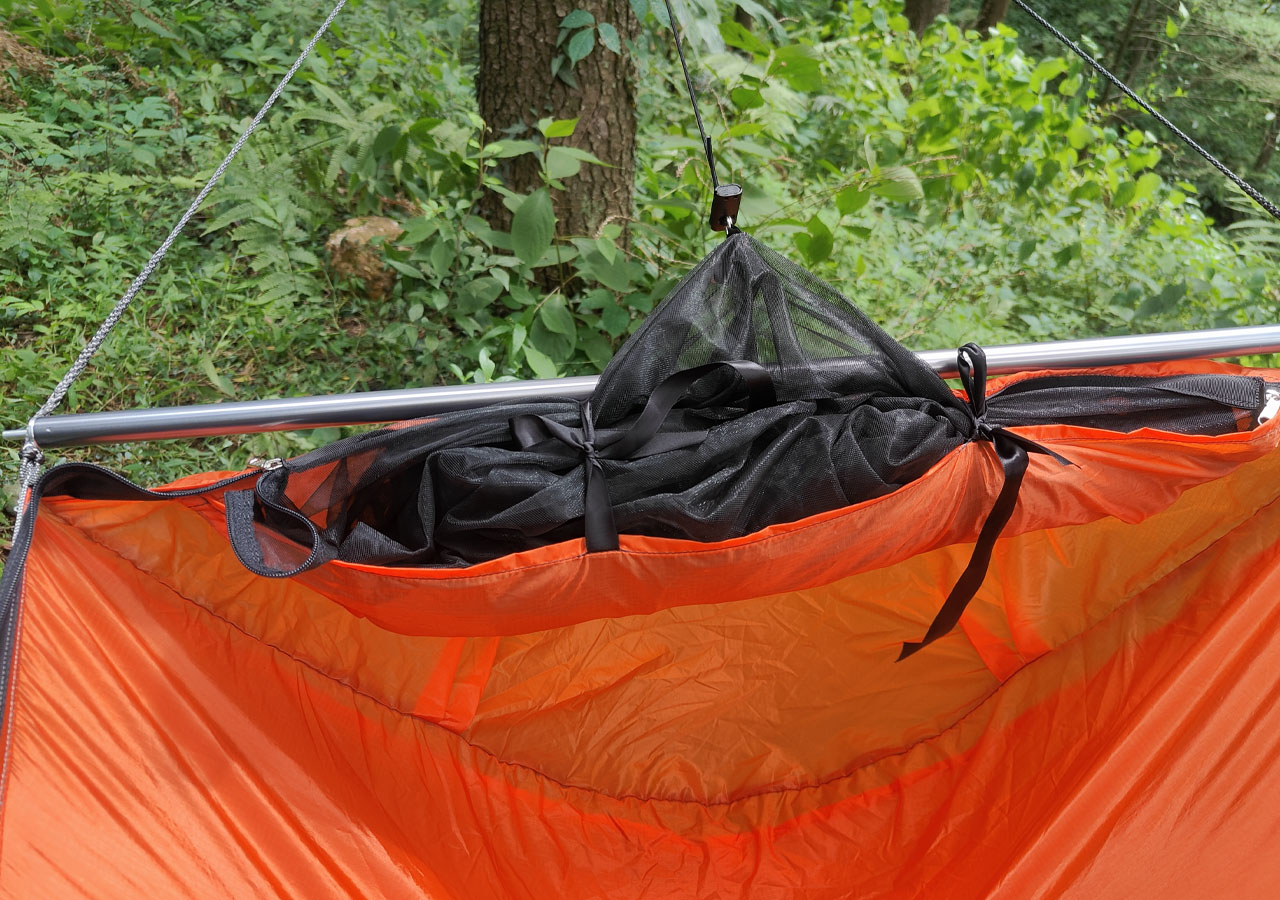
Also Read: Interview With Derek Tillotson, Founder of Haven Tents
Accessing the Tent
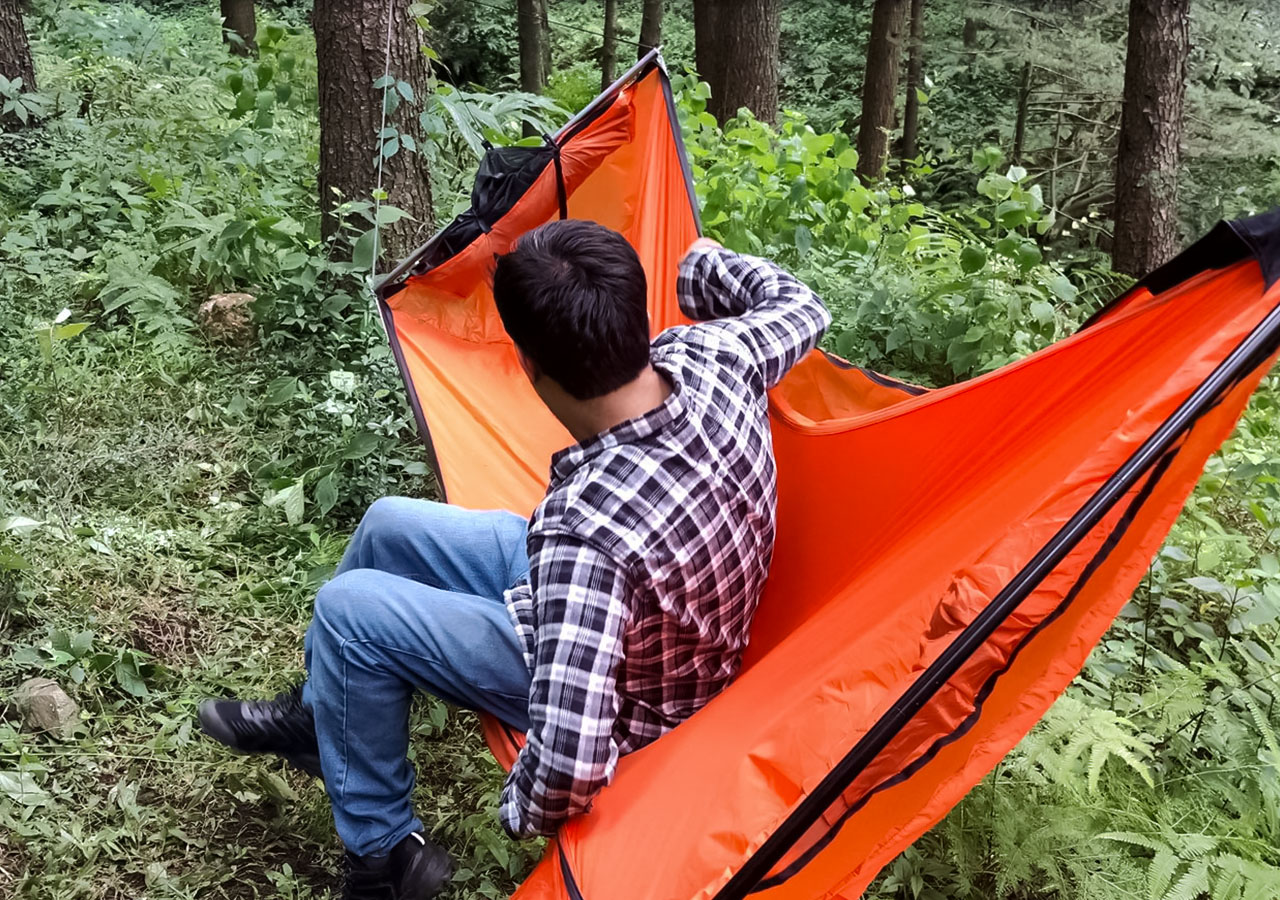
After securing the straps to the trees, I was a bit unsure about getting into the tent, as I was worried that it might roll me over. But as soon as I mounted inside, the hammock felt stable. You can use your hands to adjust yourself and avoid tipping. Like most hammock tents, you can get in from either side into the Ridgerunner, but the differentiator is that it’s designed to be very stable when you have found the right spot. Tip: Adjust yourself right in the middle of the hammock with your weight centered, and then swing or snooze.
Packing size and Portability

As the stuff sack opens from both sides, packing the hammock tent into it becomes quite easy. You can neatly roll up the tent from one end and pack it inside the bag easily. Place all the webbing within the tent before folding it up, so that they don’t hang out separately. The drawstring features a convenient plastic stopper, allowing you to secure the bag without the hassle of knots. Weighing just 1.4 lbs, the tent is lightweight and should conveniently fit into your backpack. The spreader bars, weighing 12 ounces, are packed separately, so be sure to allocate extra space for them.
Material and Build Quality
Since receiving the hammock tent, I was excited to review it, especially because it came with its Made in the USA assurance. Initially, I wasn’t excessively impressed with the feel of the 30D Dream-Tex fabric when I unpacked it. However, after setting it up, I quickly saw how durable and strong the tent actually is. At around 140 lbs (60kg), I found it more than capable of comfortably supporting my weight. Even when two of us, both roughly the same weight, climbed in together, there was no tension or signs of strain. The hammock tent held up beautifully, proving its strength and reliability to hold roughly 280 lbs.
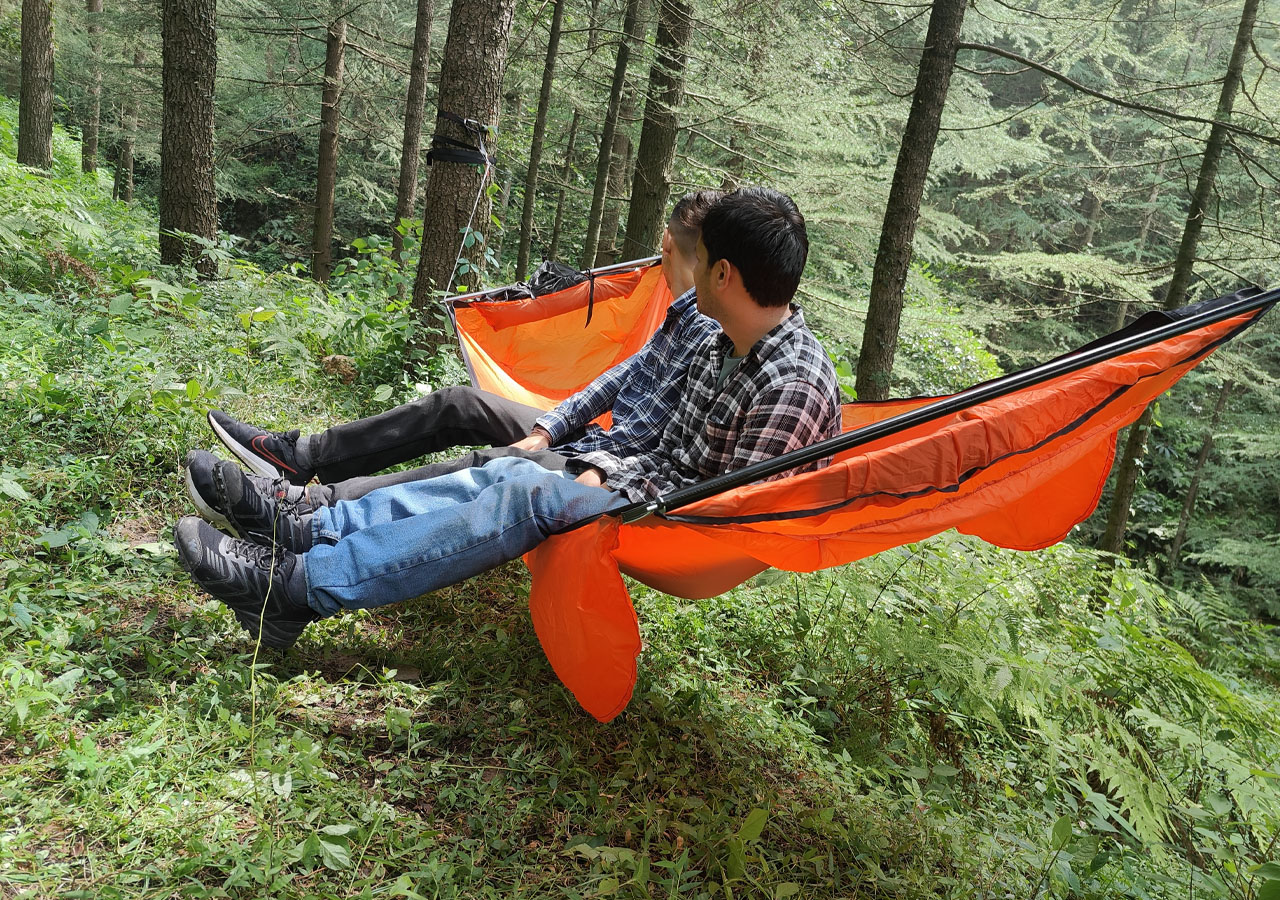
One aspect worth noting here is the width of the polyester webbing. While it performed well, I believe a thicker webbing would offer more comfort and support for heavier loads. Warbonnet claims the tent can hold up to 250 lbs, and based on my experience, I’m confident it can. However, I do think that users with broader shoulders might find the hammock a bit narrow to sleep in.
Comfort and Sleeping Experience
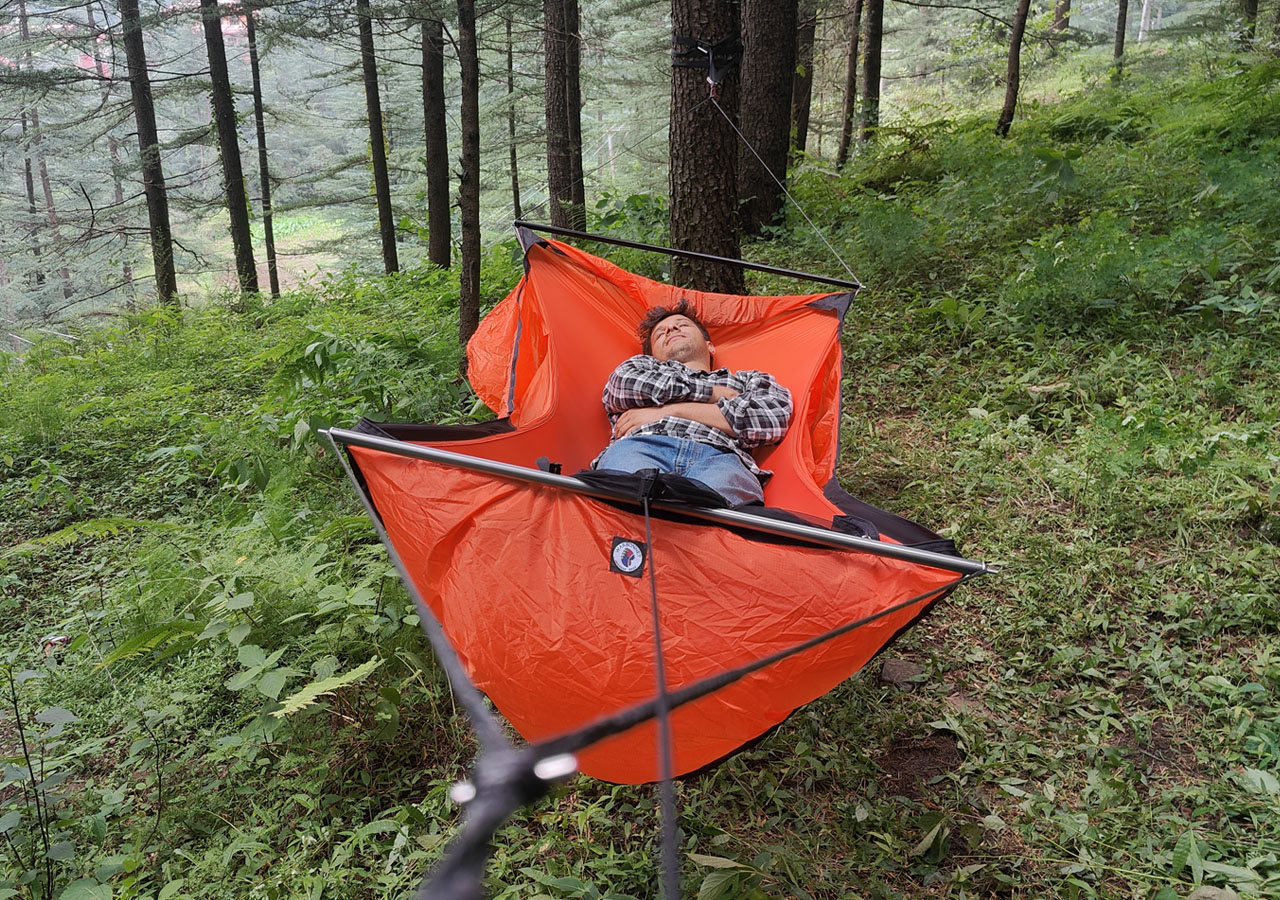
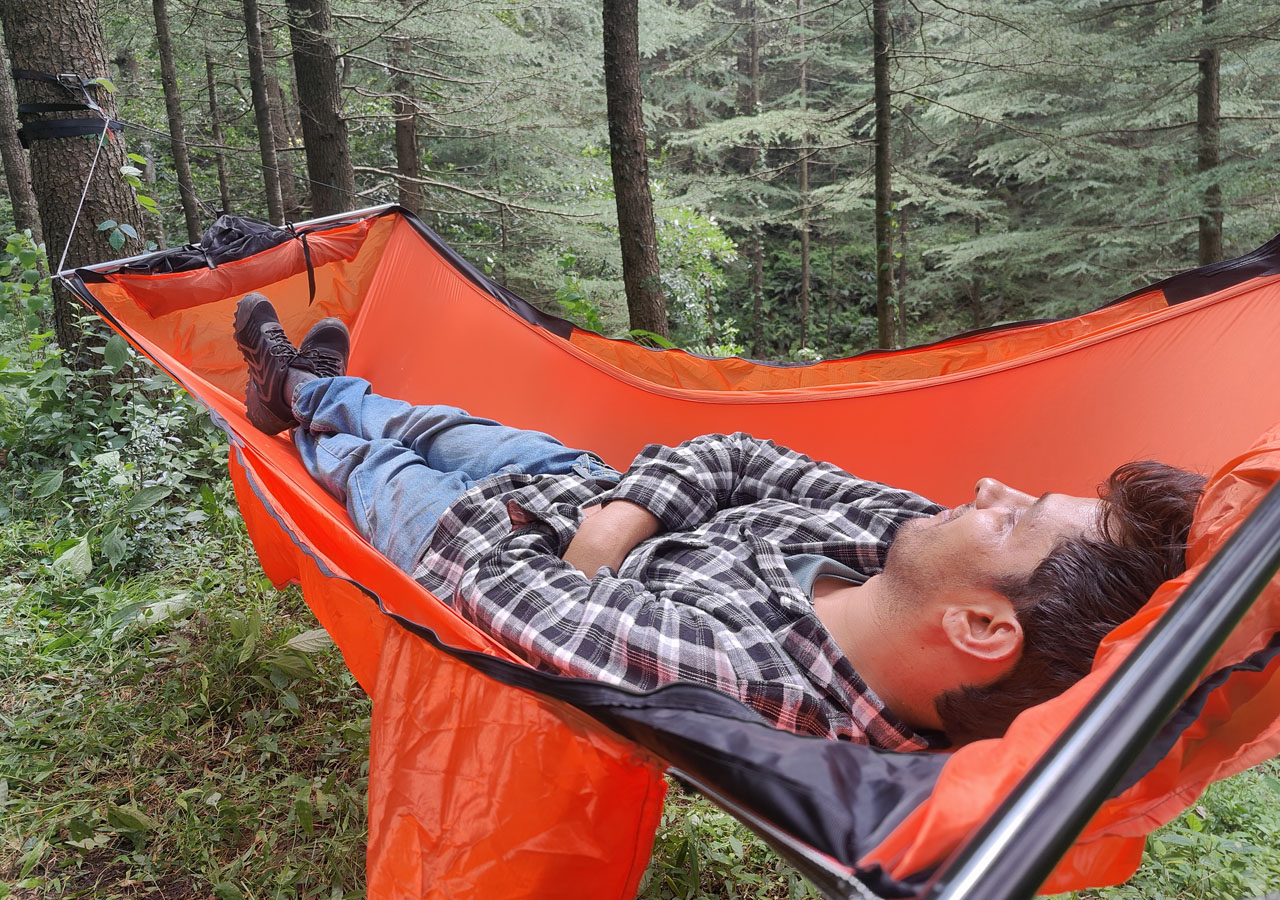
At about 5 feet 11 inches tall, I fit comfortably inside the tent with plenty of room to stretch my legs. To test its durability, I put my weight on either side, and the hammock held up perfectly, showing that the suspension system and poles effectively distribute weight. My head rested at a relaxed angle without a pillow, though I’d recommend using one if you plan to camp in it regularly. Warbonnet states that the hammock can accommodate a person up to 6.6 feet tall and supports a weight capacity of 250 lbs, both of which seem accurate based on my experience.
Weather Protection
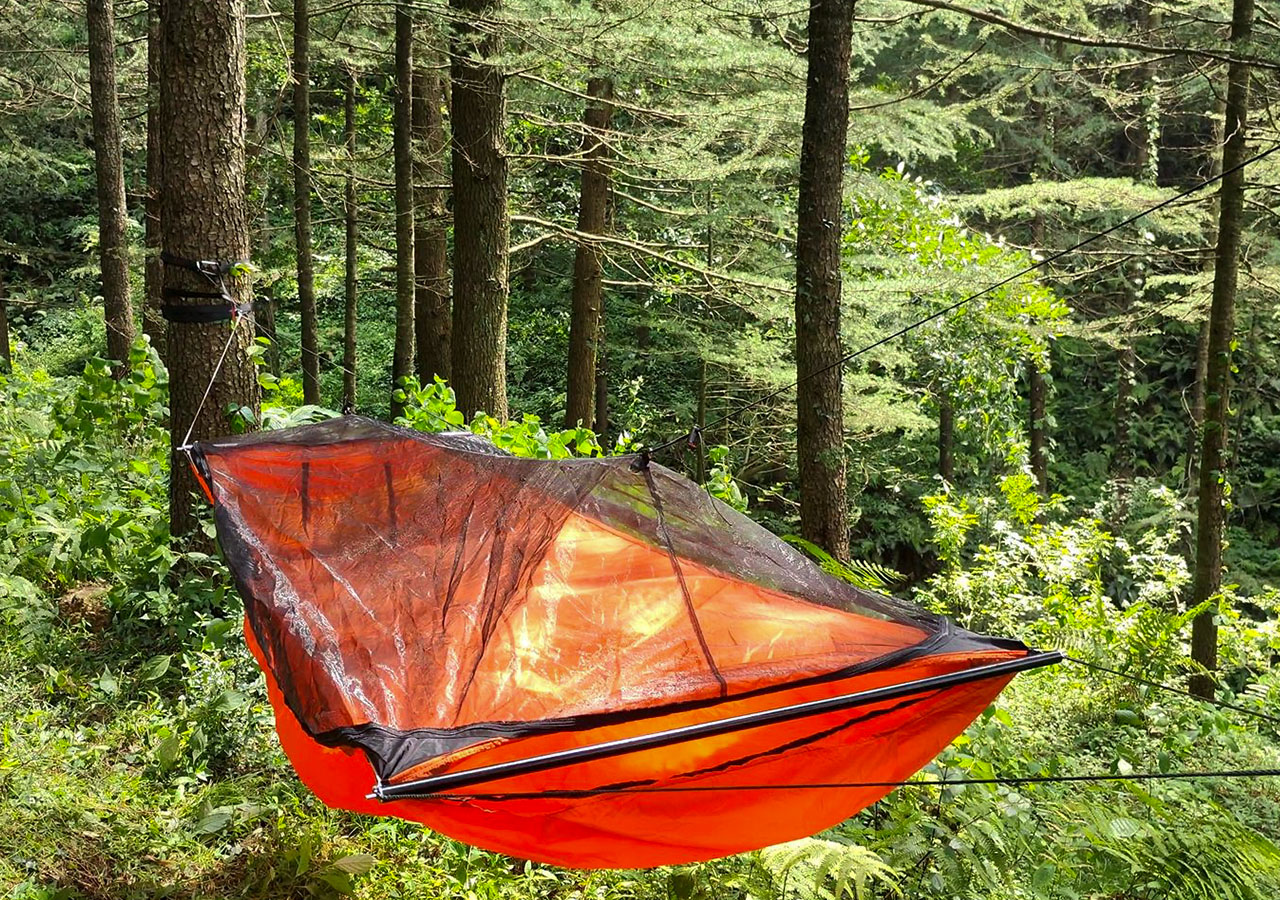
Hammock tents are known for offering greater comfort and a cooler sleep experience in warm weather, and the Warbonnet Ridgerunner is no exception. It is best described as a leisure tent, perfect for lounging or sleeping outdoors in nature. The included bug net offers good protection against flies and insects, but it is not designed to shield you from rain or cold. For full weather protection, you will need to purchase a separate tarp, and an underquilt is recommended if you plan to camp in colder temperatures.
Additional Features and Accessories

The Ridgerunner hammock tent has saddlebags on both sides for storage. This space makes it easy to keep your phone, magazines, clothes, and other essentials within reach. It also features a dedicated sleeve for a sleeping pad to ensure the pad stays in place throughout the night while adding extra comfort and insulation from the nippy air below. Additionally, the tent is compatible with Lynx underquilt models for added warmth in cooler weather.

Pricing
The Warbonnet Ridgerunner hammock tent is available on the official website for a price of $130. You can choose either a single or double layer design, an optional net, and multiple suspension options to match your requirements.
Final Verdict: Value for Money
The Warbonnet Ridgerunner hammock tent is a great choice for anyone looking for an alternative to traditional ground tents. It offers a unique and comfortable sleeping experience by allowing you to lie flat on your back instead of curling up like a banana, which is common with many hammocks. From my own experience, I highly recommend it to those interested in hammock camping.
The build quality is great, and there are plenty of color options to match your style. Setup is straightforward and can easily be accomplished by one person in just a few minutes, and packing it away is just as simple. The design thoughtfully addresses various weather conditions, with features that can accommodate both hot and cold seasons, making it a versatile shelter for different types of camping.
It is a well-engineered piece of camping gear with thoughtfully constructed features like the bugnet and the side saddle pockets. If I were to go to a bridge hammock full-time, I think the Ridgerunner would be my first choice.
Follow Homecrux on Google News!
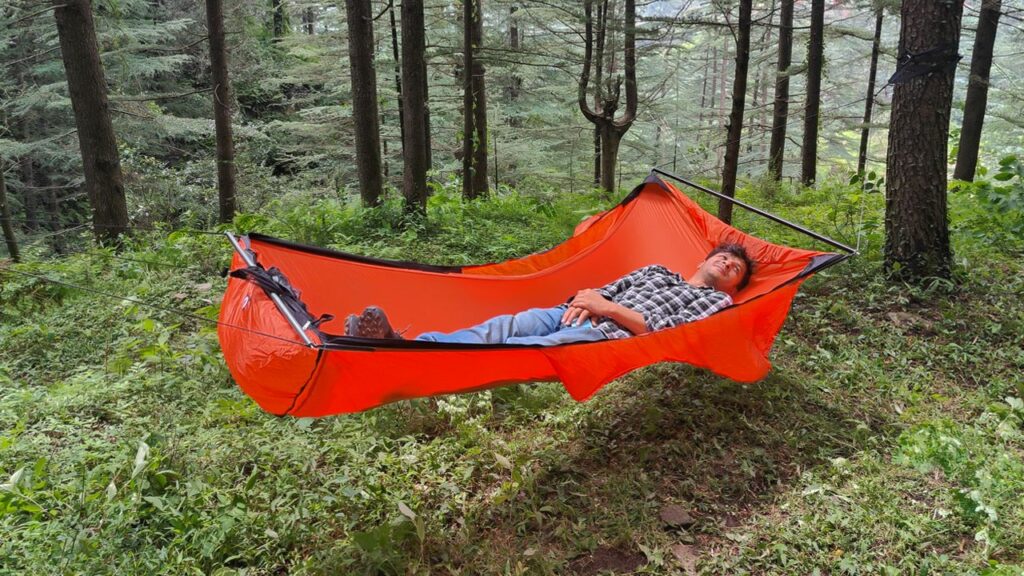


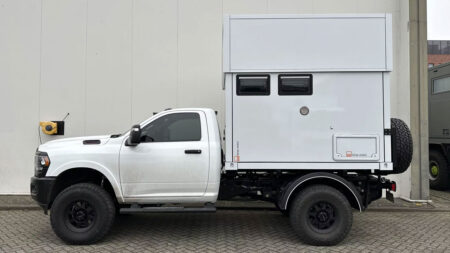

Excellent review on the WB RR! What color is that, Autumn Orange?